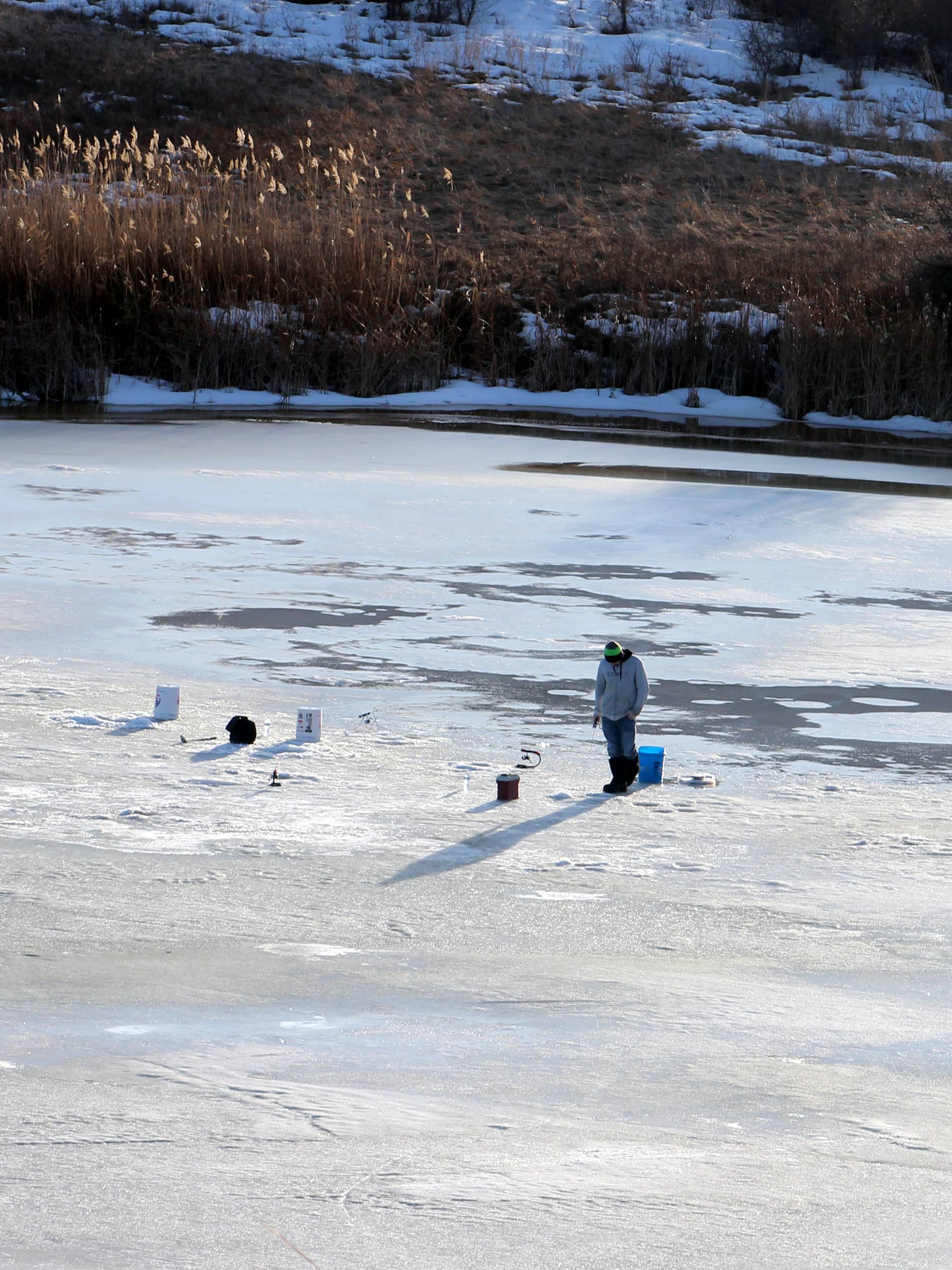
Steep Bank. An ice angler keys in on an area adjacent to a steep bank. Noting changes in terrain around a water suggests what’s going on below and can lead to finding good starting points in both summer and winter on any lake or river. Simonson Photo.
By Nick Simonson
The next clue to good fishing is still there, even on a landscape blanketed with white. Whether in the grasp of midwinter’s icy clutches, or the gentle warmth of summer’s embrace, hints and suggestions as to where fish locate and where to start finding them are all around us, if only we choose to look.
While electronic options like sonar, GPS, side scanning and underwater cameras guide us to the spot-on-a-spot, there are those suggestions that come from the area surrounding the water that give us tips as to where to first find the spot, and no amount of gear can pick them out. But a close eye, and some experience can. Some of the indications are more obvious, like a row of trees or an old roadbed intersecting the shoreline at a 90-degree angle. Others might be a bit more subtle, or perhaps like at this time of year, disguised by a layer of snow, like a gully that brings the spring and summer rain, and with it over the past millennia a new substrate of sand or gravel in a delta that leads out into the muddy depths of a reservoir. Even the trees and shrubs on the shoreline provide suggestions as to what lies beneath the nearby water in some cases and following their lead can result in great angling in any season.
For crappies and bluegills, the flooded timber on the young reservoir north of my home is an easy pickup. The gray wood of the dead trees frozen in the lake’s icy surface waves like a hand, beckoning my winter fishing efforts to come nearer and explore the trunks where both breeds of panfish await and fast action is a guarantee. Similar too, an old shelterbelt which abruptly ends at a two-wheel farm road along the edge of a notable perch slough has always served as a starting point to pick off winter’s green-and-black footballs schooling below. While the living stand of trees ceases just short of the shoreline, the remnants of roots, stumps and branches lay out in the depths of the water, a continuation of what the shore shows and an elongated haven for those yellow perch moving from deep to shallow under the ice.
Even where tall trees and stands of brush provide no hints, the rolling hills along lakes and rivers offer up suggestions of good fishing. Following their rises and falls creating funnels and valleys on the shore which intersect with a water also hints of changes below the surface. Here, substrate often changes and for fish like walleyes that will take sand and gravel over a mud bottom or will relate to the chunk rock scoured clean by intermittent influxes of water, it’s a likely starting spot for any angling effort in winter or summer. Even before setting foot on the ice or launching a boat, a quick look at a satellite map online, or even a topographic one can suggest the shifts in the landscape around a lake, the notable rills and creeks that bring in water, and ultimately a place worth exploring. The same too goes for what can be found on the hills. While it might be tough to see them now, in summer the presence of large rocks and boulders in a green pasture or piled along a field from years of picking can suggest the appearance of those same structures in the nearby underwater world as well; a perfect haven for both smallmouth and largemouth bass that relate to these bigger structures, depending on the season.
While this information doesn’t pop up on a screen or ping on a smartphone, it is perhaps the most important way to whittle down the best fishing areas on a lake in any given angling season. While they are often overlooked, in time and with experience their clues become clearer, and they can be applied from lake-to-lake and river-to-river, resulting in the ability to find fish faster no matter the water or the season. Keep an open mind and an open eye, on both new waters and old, and look around a bit for better fishing…in our outdoors.
